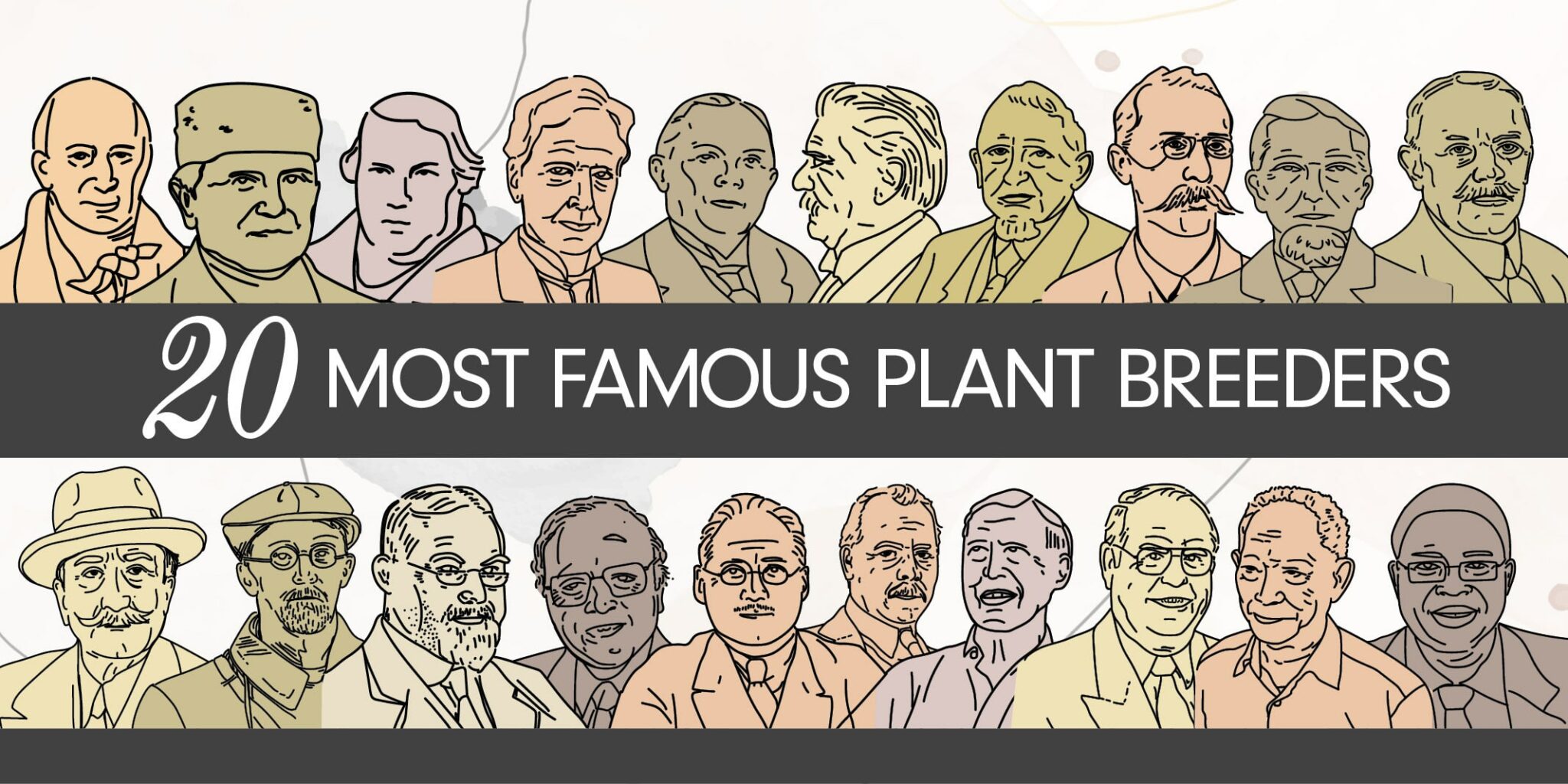Looking back after two centuries of Mendel
In the year where it has been two centuries since Gregor Mendel was born, it seems appropriate to look at some of the other people who have made a bigger than normal contribution to plant breeding and have enriched our world and our plates with new, better, higher yielding and more delicious plant varieties.
Nowadays, plant breeding is very much an interdisciplinary activity, with lots of input from other departments within a seed company, such as the plant pathology, molecular or marketing departments. But in the old days it was often a one-person job, and from time to time it is good to look back and see on whose shoulders we are standing. No doubt, there are many others that also deserve a spot in this list. Feel free to send us your proposals, and why those persons should be on the list as well.

Made By: Lesley Nakonechny
Nazareno Strampelli (1866 – 1942) – Italian agronomist and plant breeder
In 1900, he started his research on the hybridization of wheat, although he was unaware of the concurrent work of Gregor Mendel. In 1903 he continued to cross wheat varieties and within a few years developed new high-performing hybrid combinations. He created wheat varieties with a reduced stem, and a shorter growing phase and increased disease resistance. One of Strampelli’s best performing varieties was named ‘Gregorio Mendel’. Strampelli’s work allowed Italy to become almost self-sufficient in bread wheat production, increasing the average yield of 1.0 t/ha at the beginning of the 19th century to about 1.5 t/ha in the 1930s. Some of his varieties were exported to foreign countries, such as Argentina, Mexico, and China. The ‘Mentana’ variety was exported and cropped in Sonora, Mexico, and became the source of a new generation of high-yielding, small size wheat varieties. Strampelli’s work laid the foundations for Norman Borlaug and the Green Revolution of the late 1960s.
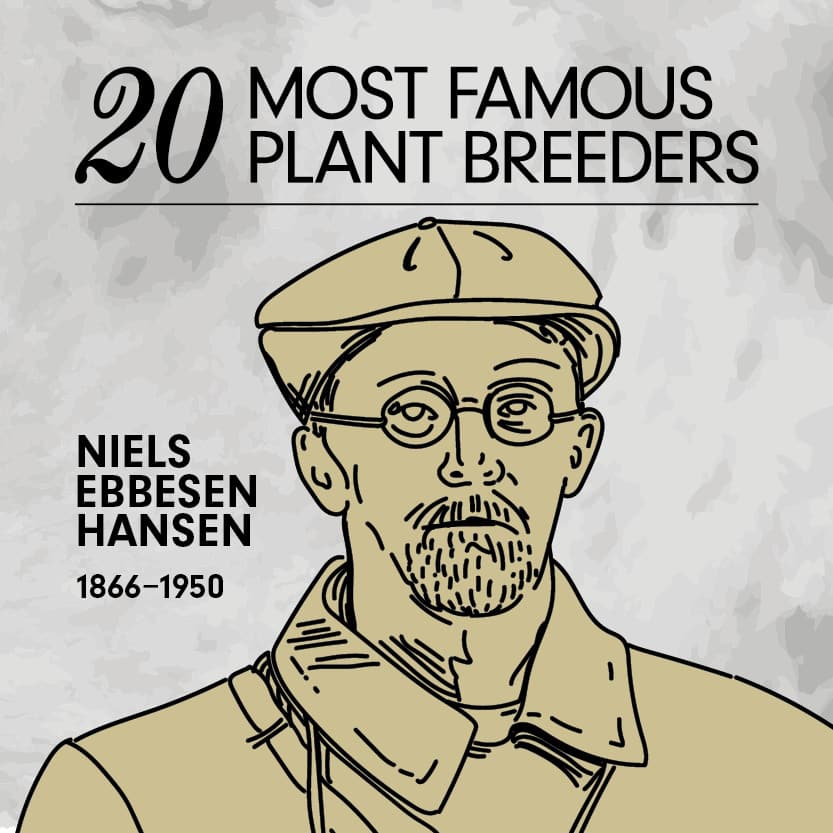
Niels Ebbesen Hansen (1866, 1950) – Danish-American horticulturist, and agricultural explorer
On his many expeditions in northern Scandinavia, Siberia, Manchuria, and the dry steppes of the Volga, he searched for new grasses, fruits and other plants throughout Europe and Asia, which he brought back to the U.S. He then raised or crossbred them with U.S. plant varieties to produce a stronger plant. He bred many new fruit varieties, among them the Hansen hybrid plums. He is also credited with the discovery and introduction of Cossack alfalfa, crested wheat grass and brome grass. He developed larger apricots and plums by crossing native varieties with those he brought from Asia.
During a trip to Russia in 1897, he came across the red-fleshed wild apple Malus niedzwetskyana and began two breeding programs with it. One was aimed at developing a cold-hardy cooking and eating apple, and the other aimed at developing ornamental crab-apples. His breeding led to the ‘Almata’ apple and the ‘Hopa’ crab-apple, among other varieties.
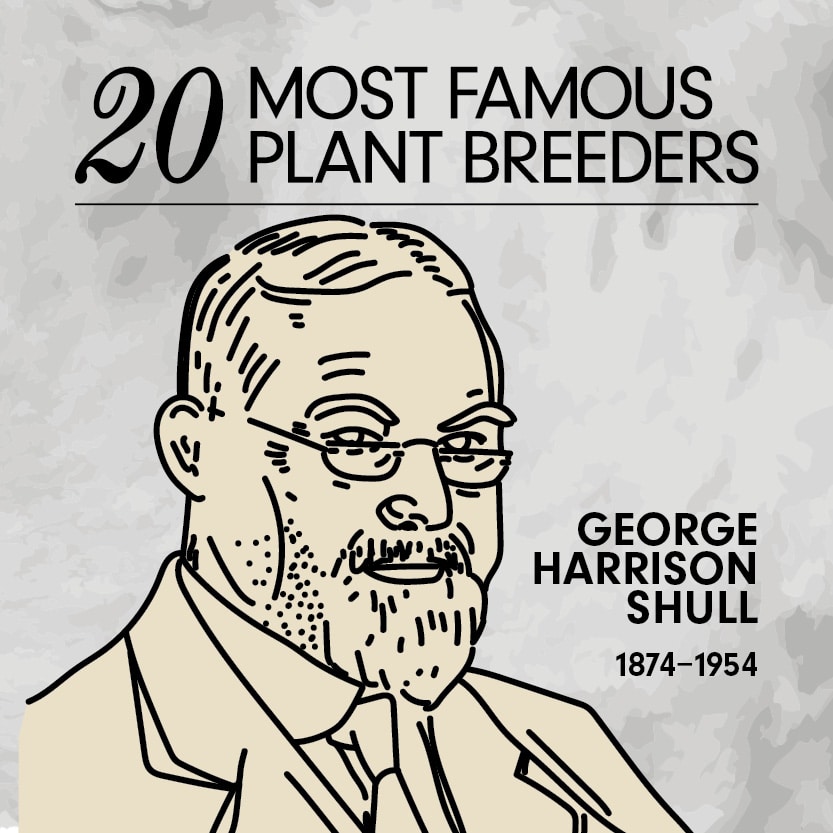
George Harrison Shull (1874, 1954) – American plant geneticist
After his graduation from the University of Chicago (Ph.D.) in 1904, he served as botanical expert to the Bureau of Plant Industry in 1903-04, and after that as botanical investigator of the Carnegie Institution at the Station for Experimental Evolution, Cold Spring Harbor, N. Y. He gave special attention to Burbank’s results. Shull was instrumental in the development of hybrid maize, but he was mainly interested in pure lines, not for their economic value but mostly for his experiments in genetics. After producing maize lines that bred true, he then crossed these strains. The hybrid offspring of these pure lines were vigorous and predictable. This had great impact upon global agriculture, and for his work on maize, Shull was awarded the Public Welfare Medal from the National Academy of Sciences in 1948. Shull described heterosis in maize in 1908 but termed it ‘heterosis’ only in 1914. He made several other key discoveries in the field of genetics.
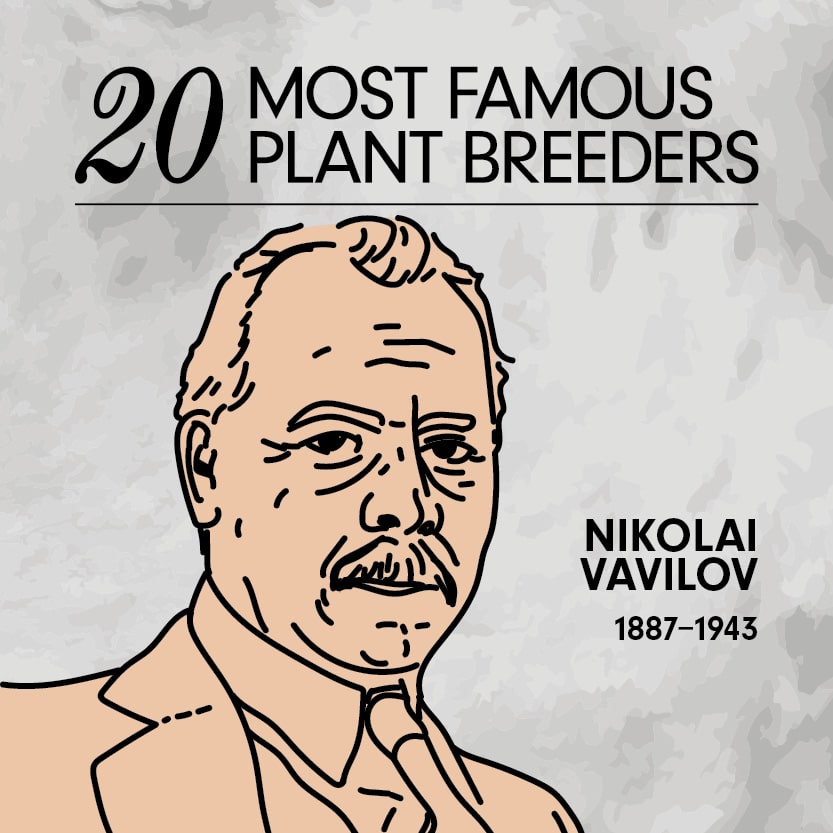
Nikolai Vavilov (1887, 1943), Russian botanist and geneticist
Vavilov was a prominent organizer of science and is recognized as the foremost plant geographer of contemporary times. He developed the theory on the centres of origin of cultivated plants, which are geographical areas where a group of organisms, either domesticated or wild, first developed its distinctive properties. To collect data for his theory, he organized a series of botanical-agronomic expeditions, and collected seeds from every corner of the globe. His major foreign expeditions included those to Iran (1916), the United States, Central and South America (1921, 1930, 1932), the Mediterranean and Ethiopia (1926-1927). In Leningrad, he created the world’s largest collection of plant seeds. Unfortunately, from the early 1930’s his scientific programs were being deprived of governmental support. The institute, headed by Vavilov, resisted the pseudo-scientific concepts of Lysenko. As a result of this controversy, Vavilov was arrested in August 1940, and died in prison in 1943.
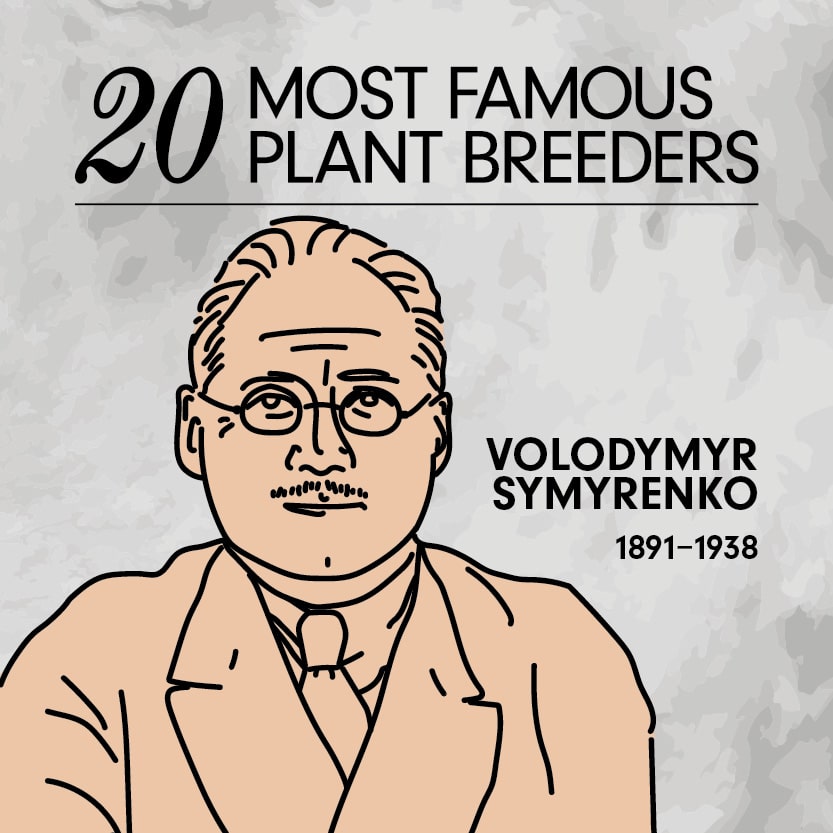
Volodymyr Symyrenko (1891, 1938) – Ukraine Pomologist and selection scientist
A graduate of the agricultural faculty of the Kyiv Polytechnical Institute, he founded and directed the Mliiv Orcharding Research Station and chaired the orcharding section of the Agricultural Scientific Committee of Ukraine. He was a key figure in the interwar reconstruction of orchards in Ukraine. In 1928 his nurseries contained 40,000 hybrids of fruit trees and berry bushes. Similar to his friend Vavilov, Symyrenko’s views on orchard development and heredity were in conflict with Soviet views and with those of the geneticist I. Michurin. Early in 1933 Symyrenko was arrested and given a 10-year term in prison where eventually he was executed. Symyrenko prepared many scholarly and popular works in his field, including Sadovyi rozsadnyk (The Orchard Nursery, 1929) and Plodovi sortymenty Ukra√Øny (Fruit Varieties of Ukraine, 1930).
Read Past 20 Most:
The 20 Most Climate Friendly Companies Over 2021
The 20 Most Innovative Plant Varieties of 2020
20 Most Innovative Breeders in the European Seed Sector in 2019
20 Most Influential People in the European Seed Sector in 2018


